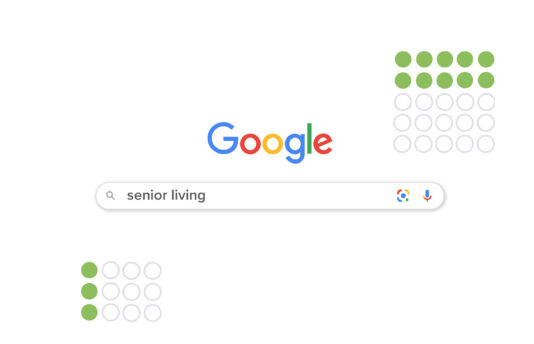Have you decided to utilize pay-per-click (PPC) advertising to help your business and online marketing efforts this year? You’re not alone: According to Statista, search ads accounted for $46 billion of U.S. ad spend in 2019 and is projected to reach nearly $68 billion in 2021. PPC ads can help your business get to the top of the first page of search results, providing immediate campaign leads typically unseen with SEO efforts alone.
PPC can cover keywords spanning your products and services, your brand name and even the names of your competitors so your brand appears first, giving your business a competitive edge. With the proper planning, your PPC campaign can be well executed without wasted spend on underperforming keywords or branded keywords.
So before you start your next PPC campaign, consider these five things:
1. Set goals and key performance indicators (KPIs) for measurement.
When beginning a PPC campaign, ask yourself: What am I looking to improve, and what does success look like for my brand? To measure your success, you’ll need to set KPIs. These may range: You can create campaigns focused on intent to purchase, brand awareness or conversions by getting a user to complete a phone call, visit your website or fill out a contact form, among other things.
Once you’ve determined your KPIs, take some time to create or optimize necessary website resources. Landing pages should be relevant to both your ads and the keywords on which you plan to bid. Calls to action (CTAs), including contact forms, clickable phone numbers or clickable email addresses, should not be invasive, but should be easily accessible on varying screen sizes, including desktops, tablets and mobile phones. Conversion tracking should be set up, with conversions set for each measurable action taken on your site. This will be critical for measuring your KPIs and the success of your ad campaign.
Regardless of how long you have been running PPC ads, there should be a period of testing to determine the optimal strategy for your current campaign.
2. Perform keyword research and test match types and budgets.
Take some time to perform competitive research to see what other businesses are bidding on and targeting. Free tools like Google Keyword Planner provide valuable data that can forecast what your level of competition may be and the search volume of your desired keywords and budget. The Keyword Planner also allows users to experiment with different keyword match types and budgets, ensuring broad-match keywords don’t take up too much of your budget and allowing you to pick out negative keywords for which you don’t want your ads to be served. This tool can help more advanced users begin testing single-keyword ad groups (SKAGs), which include all match variations of a keyword.
3. Test variations and utilize responsive text ads.
You should have no fewer than three text ads running during the testing phase of your campaign. After the initial launch of your campaign, you will enter the learning phase, where the network will utilize machine learning to optimize bids and determine the best audience for your ad. During this seven-day period, you will be able to see which of your ads is performing the best to determine where to best allocate your budget.
Don’t have time to manually run tests? Utilizing responsive text ads will allow your headlines and descriptions to appear in different combinations, with Google running tests for you. Making sure text is varied can also have a huge impact on the effectiveness of your ads. Text should not be repetitive and should include at least one CTA, as well as the benefits that set your business apart. In addition to having several descriptions available, test different headlines, text combinations and CTAs to see what appeals most to your desired user base.
4. Determine your best bidding strategy.
There are two key strategies to determine which bidding method will be most effective for a campaign.
Manual bidding allows you to go in and adjust bids as you see fit, giving you more control over how much you are paying per click. With manual bidding, you can also try tiered bidding, a type of bidding strategy that has the advertiser adding the same keyword in multiple match types to determine which receives the best quality of traffic and conversions. Match types can help control the queries for which your ads are served and can be one of three categories: broad, exact or phrase. Setting the bids differently for different match types allows the advertiser to allocate different amounts of the budget to see which variation performs the best by their own expectations. While the bids should not be dramatically different, the difference should be enough to give you an idea of your ideal bid and spend.
You can also use smart bidding, which enables Google Ads to use machine learning to automatically obtain the highest number of results, including conversions and the target impression share, a bidding strategy set to have your ad shown at the very top of search results.
Whether you are using manual or smart bidding, you can make adjustments to your bids based on the location of the user, device type and the age of the potential customer.
5. Use other digital channels in tandem with PPC to enhance your campaign.
PPC is not always a stand-alone effort. Depending on your business, you may want to pair PPC with other marketing efforts. For example, if you have a unique offering that may not always be commonly searched or if your industry is extremely competitive, running PPC along with some other form of digital advertising could set your brand up for further success.
- Google Display Network—Advertising outside of search results is possible through the Google Display Network, a massive group of partner sites that show advertising relevant to both the site itself and the user. Google Display Network includes YouTube, Gmail and ad-supported mobile apps among the two million websites, applications and videos that are part of the Network across the Internet. Its scope covers over 90% of Internet users across the globe, allowing you to showcase your ads for a massive audience. When developing a display campaign, you will be able to target your ads to your desired audience by location, demographics and intent, making sure the right people are seeing the ads and taking action. This helps broaden your audience beyond search results, which can be dependent on the search query entered by the user.
- Programmatic Advertising—Programmatic ads are purchased using algorithms to determine the best audience and placements for your messaging, requiring less actual manpower and allowing more time for the advertiser to optimize and improve ads as they run. Programmatic advertising is efficient and effective, getting more results due to its machine learning. After entering your budget and relevant information, an algorithm will be able to determine where the most effective placements are for your campaign, saving budget for ads with appropriate audiences. Because programmatic ads appear in different placements than PPC ads, the programmatic ads can help feed potential users at the top of the funnel. Creating brand awareness then prompts the user to search for and potentially convert on your site or through other ads later in the funnel.
- Organic Efforts—Improvements to your website and other aspects of your online presence can help your website move up in organic search rankings. Fully fleshed-out content, alt text on images and well-placed CTAs, along with keyword-rich metadata, will boost your SEO efforts. Local listings and directories can also help your business thrive online, getting your site in front of a wide range of audiences and positioning you as the expert in your field in organic efforts in addition to your paid efforts.
At the end of the day, the best way to help your PPC campaign succeed is by having a well-rounded marketing campaign focused on all areas of your business’s digital presence, with resources going toward maintaining your existing customer base while reaching out to prospective clients.











